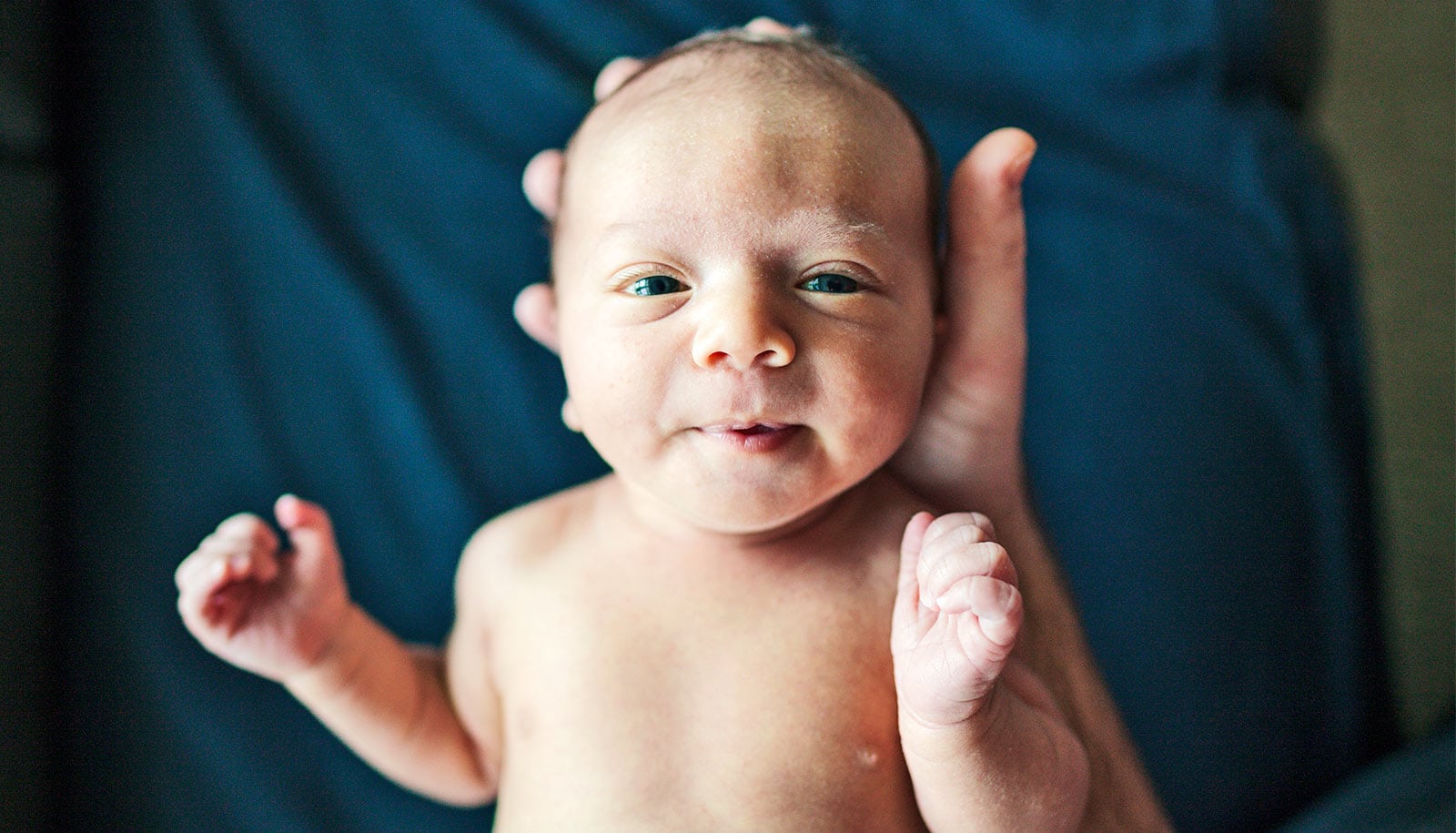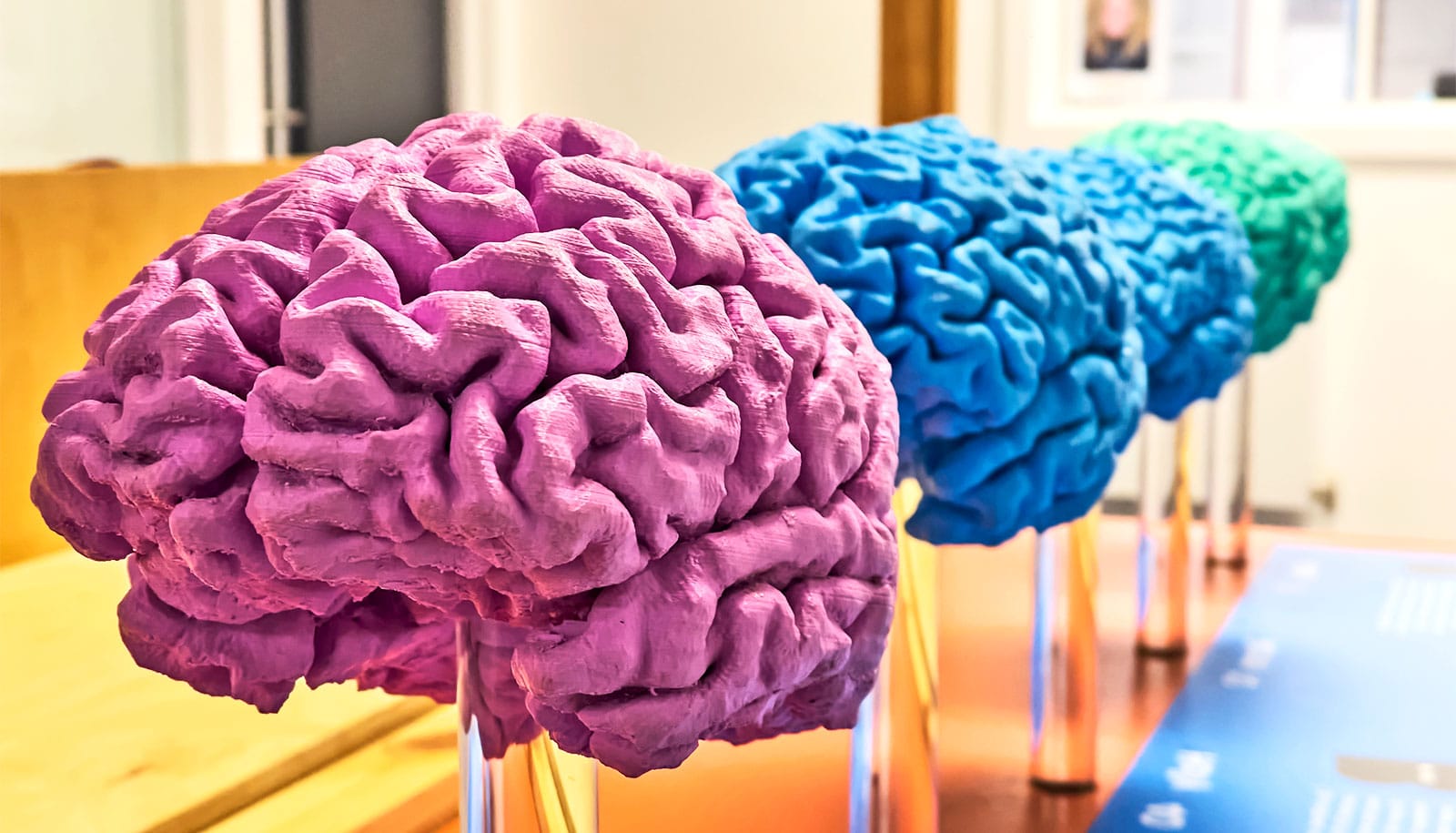New research finds that a brain network active at birth is linked to social behavior later in life.
Paying less attention to faces is one of the key markers of autism spectrum disorder. But while researchers have begun to uncover the brain network that supports processing of social stimuli such as faces, gaze, and speech, little is known about how and when it begins to develop.
In a new study, Yale researchers have now found that this network is already quite active at birth or shortly thereafter, a finding that provides insight into the brain processes that underlie social behaviors later in life.
The study appears in Biological Psychiatry: Global Open Science.
This suggests that the cortical brain processes that give rise to social attention are likely at play shortly after birth and lay the foundation for development of social engagement skills.
The researchers suspected this pathway—known as the social perception pathway—might be functional very early in development.
“Newborns are already showing preference for faces and gaze,” says Katarzyna Chawarska, a professor of child psychiatry at Yale School of Medicine (YSM) and co-senior author of the study.
First, the researchers used data from the Developing Human Connectome Project, a study funded by the European Research Council that’s collecting brain imaging, clinical and behavioral data, and genetic information from children up to 10 months old.
Using the project’s magnetic resonance imaging data, the researchers assessed the functional connectivity across the brain areas that make up the social perception pathway, which includes regions dedicated to vision processing and an area called the superior temporal sulcus that specializes in processing faces, speech, and gaze information.
“We found that connectivity within this network was already quite robust within a couple of weeks after birth,” says senior author Dustin Scheinost, associate director of biomedical imaging technologies at the Yale Biomedical Imaging Institute.
The finding suggests that some of the social preferences seen in babies early on might be reliant on this pathway, Chawarska explains.
The researchers then did a similar analysis with children who had a family member with autism spectrum disorder, which increases their likelihood of developing social difficulties. Within this group, the pathway also appeared to be interconnected at birth, as the researchers had observed in the Developing Human Connectome Project participants.
As they followed this second group of children over time, the researchers found that children who displayed stronger connectivity in the social perception pathway shortly after birth paid more attention to faces when they were 4 months old. Further, greater attention to faces at 4 months old was associated with fewer social difficulties at 18 months of age.
“This suggests that the cortical brain processes that give rise to social attention are likely at play shortly after birth and lay the foundation for development of social engagement skills,” says Chawarska.
The research team is digging further into this area. They are currently looking at additional measures of attention and following a larger group of children over time.
“This work will help us understand more about the brain processes that drive social attention in typical development and that may be involved in the social vulnerabilities we know are associated with autism,” says Chawarska.
Support for this research came from the National Institutes of Health and Yale University. The content is solely the responsibility of the authors and does not necessarily represent the official views of the National Institutes of Health.
Source: Yale



